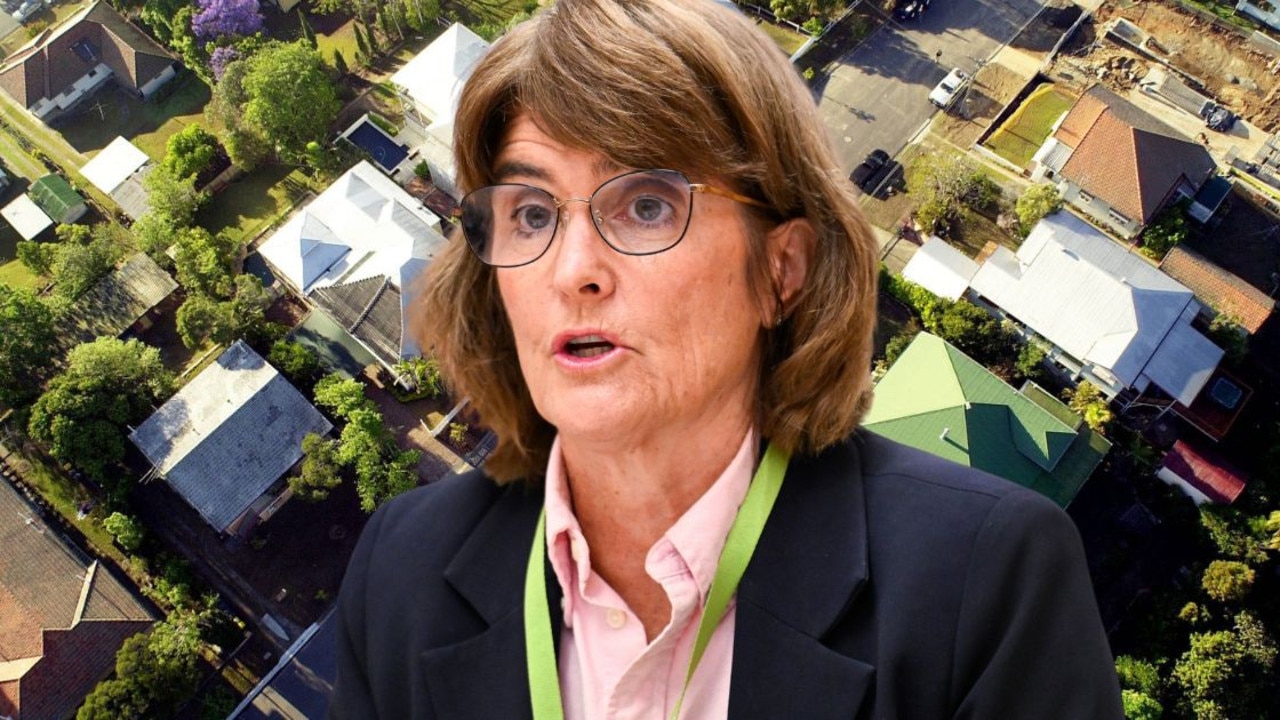Brisbane Airport: New approach to an old problem
Brisbane Airport’s new runway will be a big boost to the city’s economy next year. It sounds good on paper but what about the noise, writes Dan Knowles. SEE HOW YOU’LL BE AFFECTED
CM Insight
Don't miss out on the headlines from CM Insight. Followed categories will be added to My News.
THE roar of the crowd when Queensland scores a State of Origin try hits 90 decibels while the Brekky Creek Hotel reaches 80dB on a Friday night.
Compared to that, a plane approaching Brisbane Airport hits 70dB over suburbs like Cannon Hill.
But while red-blooded Queenslanders choose to be at Suncorp Stadium for Origin, screaming their lungs out, they don’t often put their hands up to have the 10.20pm from Dubai swooping in over their homes and the noise that it brings.
With Brisbane’s $1.3 billion second runway set to open next year, flight paths are a hot topic.
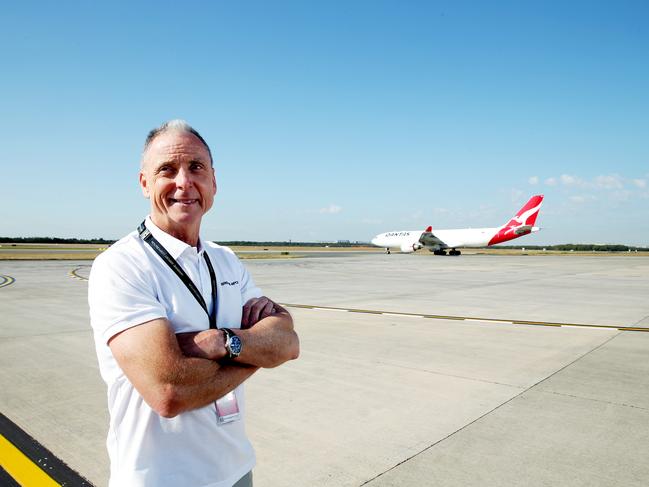
There are plenty of benefits — the new runway will make Brisbane the most reliable airport on the east coast, open up new routes and provide a massive economic boost to the city.
Some of those benefits are already flowing through. Having a second runway luring more flights from Asia was a major drawcard for The Star when it signed on for Queen’s Wharf, a development that will change the face of a massive slice of the Brisbane CBD.
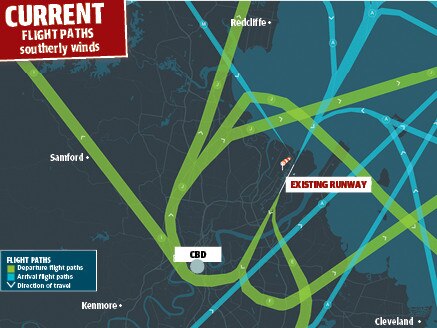
SCROLL DOWN FOR NEW RUNWAY INTERACTIVE IMPACT TOOL
BNE — Brisbane’s airport code — is well used. Airport figures show it is used the equivalent of four times a year by every Queenslander, and 55 per cent of all flights in and out of the state are made through BNE.
There are also new flights coming with quieter planes. The Boeing Dreamliner will start taking Qantas passengers to Chicago direct in April for the first time and San Francisco in February. Quieter Airbuses are also coming into Brisbane. Philippine Airlines is flying A321neo, while Air Vanuatu are using Airbus A220.
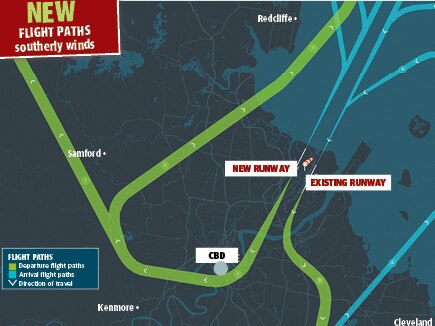
Very few would argue having a major airport is not a reality of modern life.
Want to duck off to Bali? There aren’t many regular passenger cruises headed that way. Order something online and it’s not being delivered from overseas on the mail boat.
Currently, demand peaks at 55 flights an hour. With two runways, that can go to 110 an hour, but on current growth levels it will take decades to get there.
The airport says it has done what it can to minimise disruption while still maximising the advantages of the new runway.
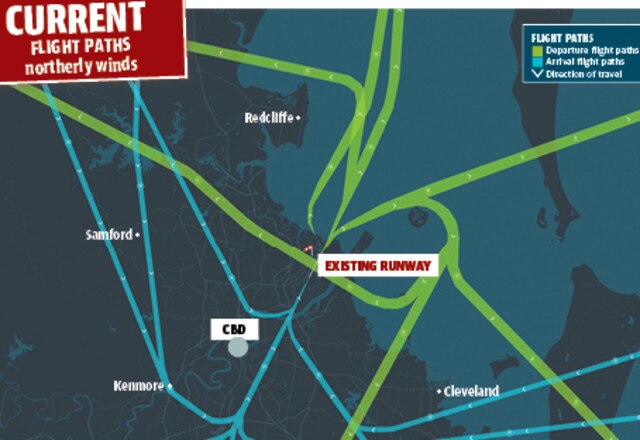
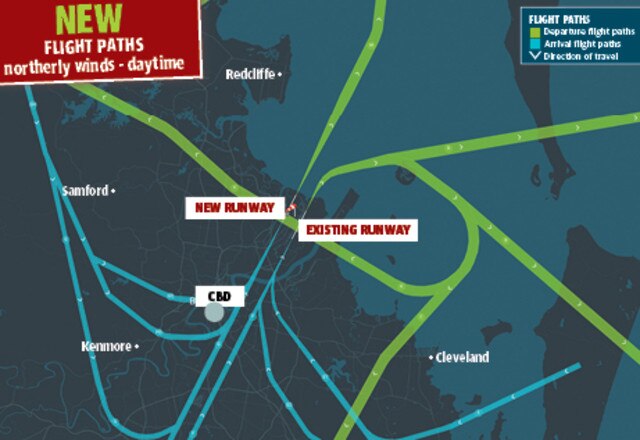
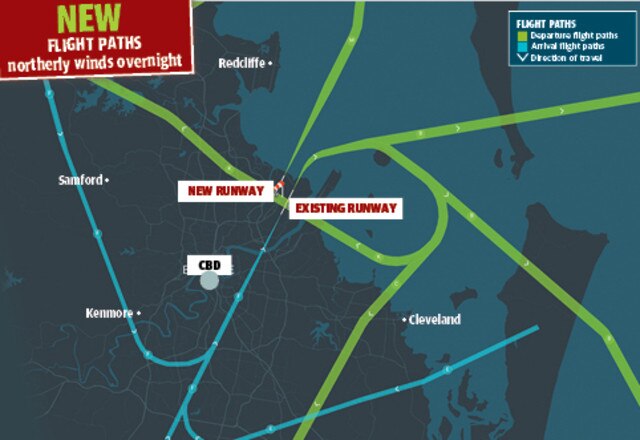
Flights after 11pm will take off over Moreton Bay, and combined with new landing technology and more efficient and quieter planes, this means aircraft noise is on the way down.
Neil Hall, the airport’s aeronautical capacity planner and an air traffic controller by trade, helped draft the rules approved by regulator Airservices Australia.
Hall says Brisbane’s huge airport precinct means planes are at between 1000ft and 2000ft by the time they get outside the fence.
Compare that to Sydney flights, where they barely scrape 600ft when they are over homes.
That, and being able to head out over Moreton Bay, means aircraft noise can be kept down.
For some residents of Cannon Hill that might be hard to believe.
According to Airservices Australia there are 90 flights a day hitting more than 70dB over the suburb’s noise monitor.
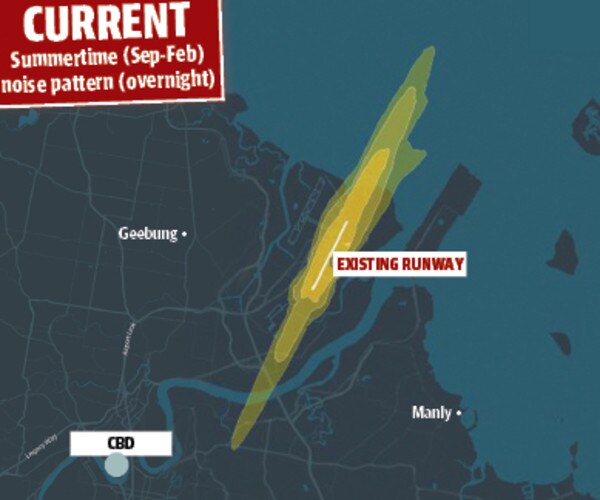
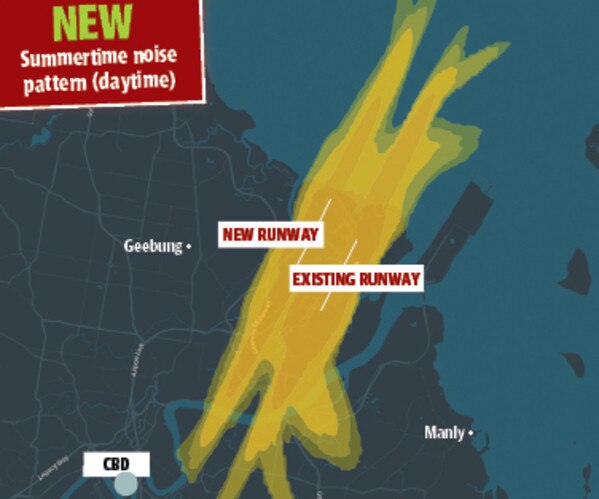
The new runway and landing system will make for increased aircraft noise, but not necessarily over the same homes.
But at the same time, an analysis of 30 years of data on Brisbane’s property prices suggests aircraft noise doesn’t bother buyers, sellers or renters.
A series of reports done by QUT at the request of the airport appear to show aircraft noise has little impact on property prices or the ability to rent them out.
In Brisbane, buyers, sellers and would-be renters are far more interested in getting close to the city rather than how many planes are overhead.
“Brisbane suburbs under existing flight paths (show) average annual returns over 30 years in excess of 8 per cent per annum, well above the Brisbane average of 6.19 per cent,” the report by Professor Chris Evans and Dr Andrea Blake says.
“If aircraft noise was the main driver of values in these suburbs it would be expected that the average annual returns would be lower than the Brisbane median house price average capital return.”
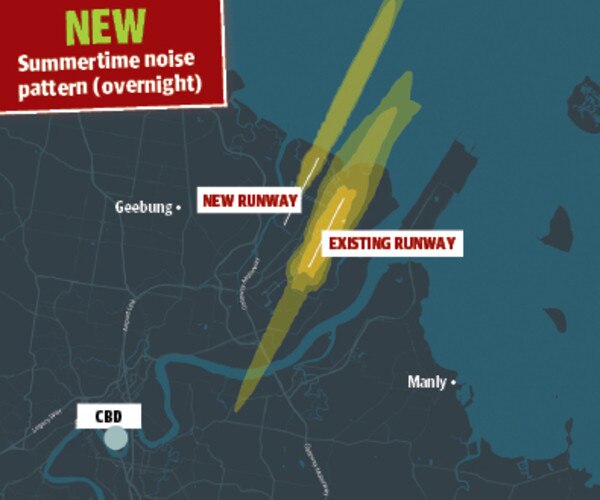
According to the BAC, two runways means four approaches and departure paths instead of two, splitting the impact further.
Our website, couriermail.com.au, today publishes a comprehensive list of flight path suburbs and details of how they will be affected.
The airport also has a flight path tool that lets residents put in their addresses and get detailed information on where they sit with the new flight paths.
So far more than 90,000 people have logged on to check flight paths and where they fall.
But, they say, as with anything aeronautical, safety is the first priority. And that means dealing with the weather. Brisbane’s winds change direction summer and winter. The prevailing summer breeze is from the northeast. It’s the opposite in winter.
And that means flight paths can change, and the noise levels that comes with them, added to different flight numbers depending on the season.
Hall says new technology that allows planes to stay higher for longer coupled with a growing fleet of quieter, more fuel-efficient aircraft has experts predicting less noise for residents.
Scattered about the Brisbane suburbs are live noise monitors.
Plotted against the paths of arriving and departing flights, along with rescue helicopters, jets from Amberley Air Base and smaller prop planes from Archerfield and smaller aerodromes at Caboolture and Redcliffe, Brisbane has busy skies.

Brisbane Airport’s operation is complicated by Amberley being so close, and Archerfield.
The defence base air footprint stops just 30km from the main civil airport.
It doesn’t sound far, but with commercial jets speeds, it is just a few minutes away.
They all need room.
For landing, the traditional approach has been come in, come down, line up with the runway and keep that level until air traffic controls tells you to come down again. Repeat until you get close enough to put the wheels down and land.
But this means noisy throttles jamming power into planes that weren’t really designed with keeping quiet in mind.
And with only one runway, the planes are passing again and again over the same slices of Brisbane.
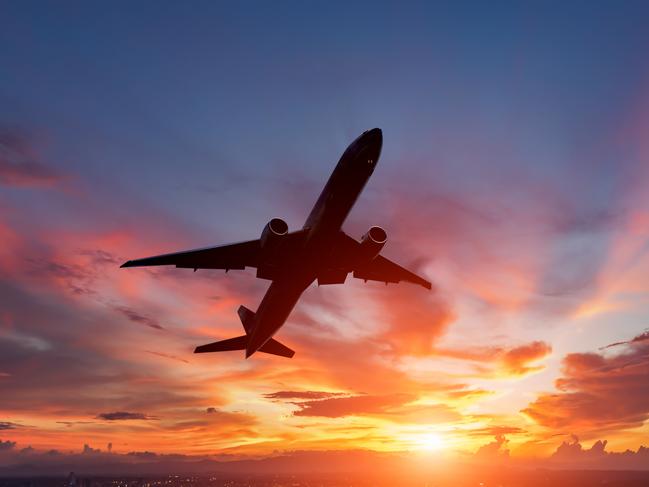
Taking off, it means jinking around, trying to either get above or stay below the flights of planes coming in. It means more noise again.
“The traditional forms of getting to the runway — instrument landing systems — we still have that, but it’s a long, long descent,” Hall says.
“Being 20km-plus, a long way out, you have to be in a straight line.
“(The new technology) allows you to fly in a curve and get reasonably close to the runway and then straighten up.
“So you can use it as an alternative. We will have
both.
“So your distribution of noise and overflying, because you’ve got both and because you’ve got two runways, you’ve got four flight paths coming in.
“It is pretty much throttle free until you start putting landing gear down and lowering the flaps.
“When you are flying in over areas out to the west of Brisbane and out to the southeast of Brisbane, until you put the landing gear down, in a modern aircraft it’s pretty quiet.”
Hall says the new generation of aircraft are both quieter and more fuel efficient.
“In a Dreamliner, it’s extremely quiet,” Hall says.
“The benefit for the community is, as more and more of those types of aircraft fly into Brisbane, there will be a quite large noise difference overall.
“It might be just noticeable when one aircraft overflies, but over a day, if you are getting 40 or 50 aircraft, people are going to notice it’s not quite as annoying. As all the new Airbus and Boeings come in, as they will over the next five to 10 years, the community will notice the difference and we have the new technology.
“Right now, because there is only a single runway, air traffic control have to take them off their routes and they have to put them on headings and bunch them up on a really tight line.
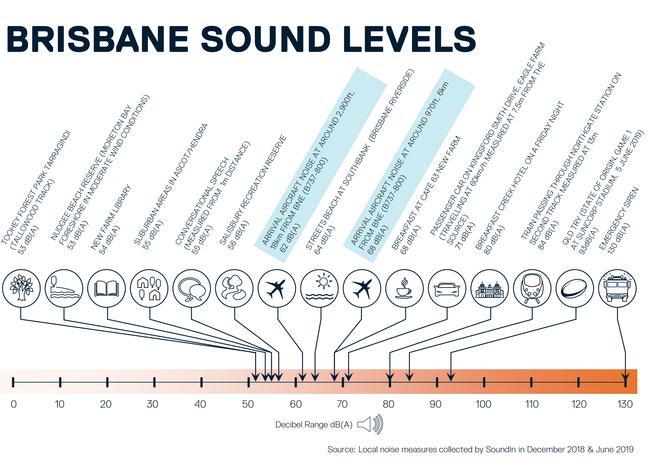
“The pilots are flying them flat at 2000ft or 3000ft and that creates quite a bit of noise.
“I think it’s just more annoying when aircraft are doing that.
“Some of those areas to the south are getting 100, 200 flights a day. I’d say that would be pretty annoying.”
The new flight paths are due to start on May 21 and the second runway that year.
The changes will hopefully give these residents some relief. “Particularly down in the southern suburbs, people who have planes pushed around all over them at the moment, and they are flat, either they will go away because they are further out or they will go on that flight path over them but they will be on that continuous descent,” Hall says.
For some, relief could be in the air.
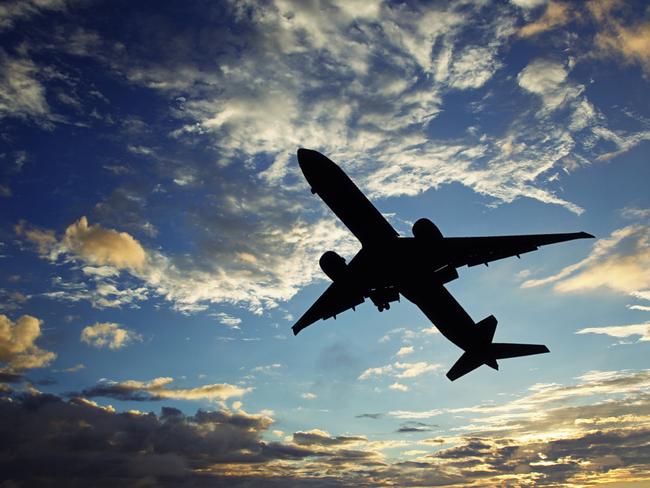
IN THE CLEAR
With the new runway and flightpaths, 89 suburbs will experience improved or similar/no change to aircraft movements or noise
IMPROVED
Acacia Ridge
Alderley
Algester
Ashgrove
Aspley
Birkdale
Bowen Hills
Bracken Ridge
Bray Park
Bridgeman Downs
Capalaba
Carina
Carindale
Chapel Hill
Chermside & Chermside West
Coopers Plains
Coorparoo
Corinda
Deagon
Eatons Hill
Enoggera
Ferny Grove
Ferny Hills
Fig Tree Pocket
Grange
Greenslopes
Herston
Holland Park (incl West)
Joyner
Kelvin Grove
Kenmore & Kenmore Hills
Keperra
Kuraby
Morayfield
Morningside
Mount Gravatt (incl East)
Murrumba Downs
Nathan
Newmarket
Newstead
Rothwell
Runcorn
Salisbury
Seventeen Mile Rocks
Seven Hills
Sinnamon Park
Stafford
Stafford Heights
Sunnybank
Sunnybank Hills
Taigum
Tarragindi
Thornlands
Upper Kedron
Victoria Point
Wilston
Windsor
Wishart
Wynnum
Zillmere
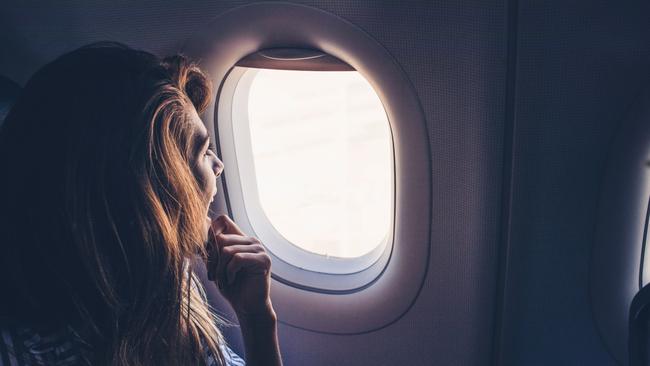
SIMILAR
Alexandra Hills
Archerfield
Bald Hills
Banyo
Beachmere
Boondall
Buccan
Burbank
Carseldine
Cleveland
Crestmead
Durack
Fitzgibbon
Graceville
Highgate Hill
Indooroopilly
Lawnton
Mansfield
Mount Cotton
Murarrie
Pinkenba
Rocklea
Sandgate
Sherwood
Spring Hill
Strathpine
Tennyson
Upper Mount Gravatt
West End
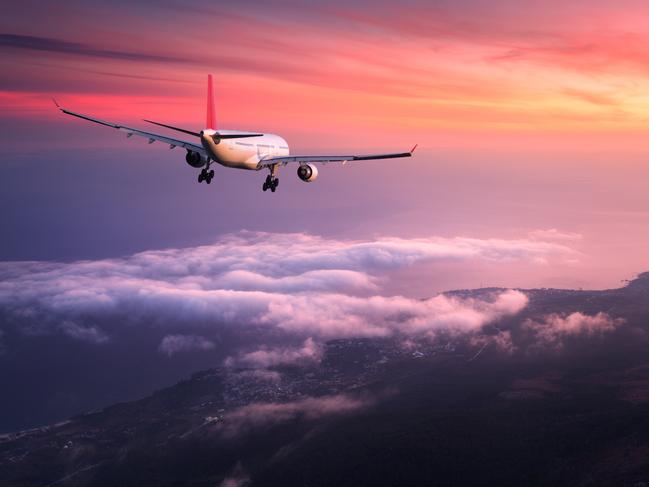
BRACE FOR IMPACT: NEGATIVELY IMPACTED SUBURBS
With the new runway and flightpaths, 74 suburbs will experience increased aircraft movements or noise
INCREASED NOISE
*Bold indicates no overnight movements
Annerley
Arana Hills
Ascot
Auchenflower
Balmoral
Bardon
Bellbowrie
Belmont
Bongaree (South Bribie Island — incl. Woorim)
Brookfield
Browns Plains
Bulimba
Buranda
Burpengary & Burpengary East
Caboolture
Cannon Hill
Chandler
Cornubia
Daisy Hill
Dayboro
Dutton Park
Eagle Farm
East Brisbane
Eight Mile Plains
Fairfield
Forest Lake
Forestdale
Gumdale
Hamilton
Hawthorne
Heathwood
Hemmant
Hendra
Heritage Park
Hillcrest
Inala
Jamboree Heights
Kangaroo Point
Logan Central
Mackenzie
Milton
Moorooka
Mount Coot-Tha
Mount Ommaney
New Farm
Norman Park
Nudgee
Nudgee Beach
Ormiston
Paddington
Park Ridge
Pullenvale
Redland Bay
Regents Park
Rochedale & Rochedale South
Rosalie
Samford Village
Sheldon
Slacks Creek
South Brisbane
St Lucia
Stones Corner
Taringa
Teneriffe
The Gap
Thorneside
Tingalpa
Toowong
Underwood
Upper Brookfield
Willawong
Woodridge
Woolloongabba
Yeronga
*The impact is not necessarily the same across the entire suburb. BAC recommends people find out the impact on a specific address within a suburb by using the flight path tool:flightpathtool.bne.com.au

